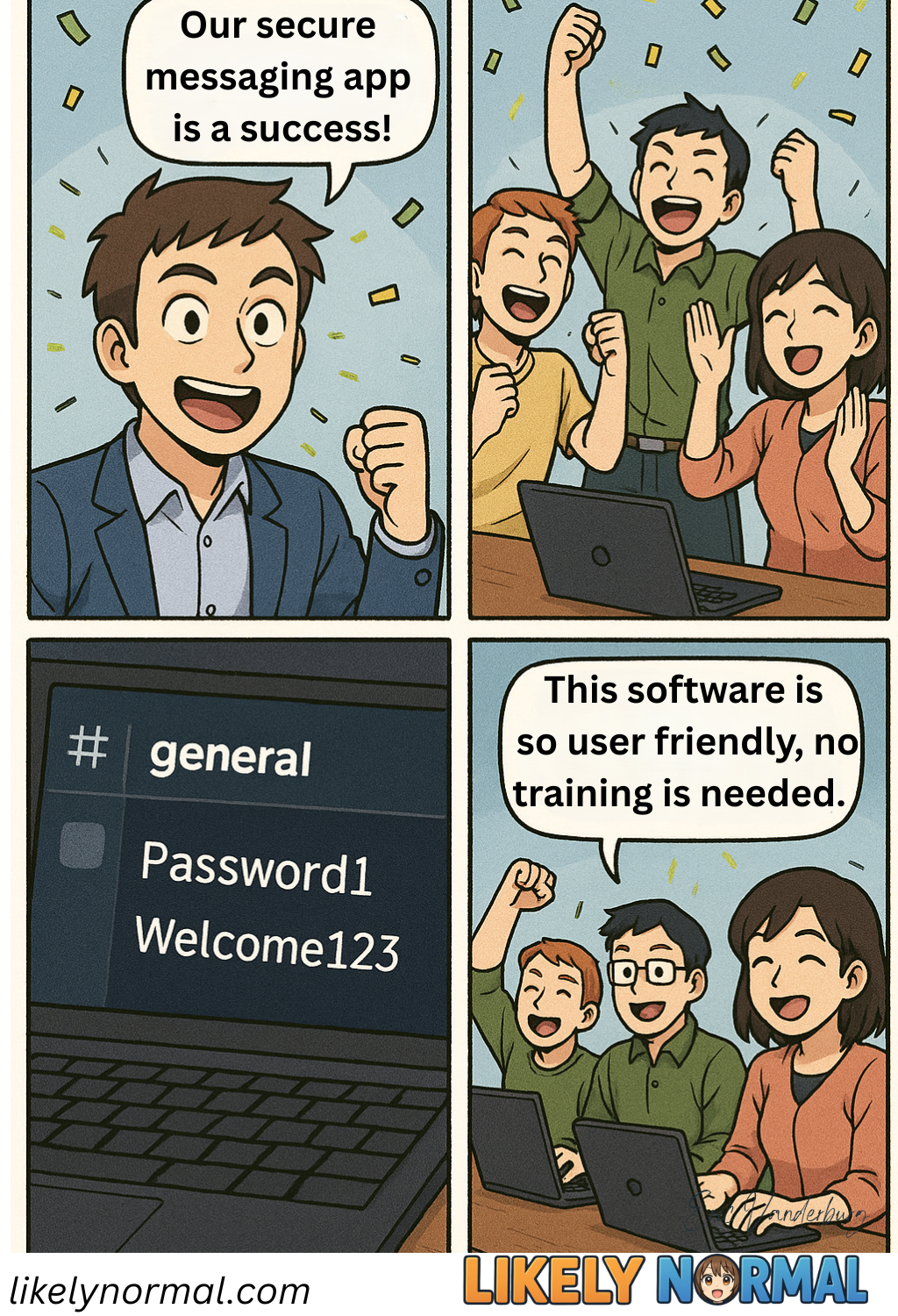Secure Messaging
Cybersecurity engineers build Fort Knox, only for users to prop open the door with a rock labeled “password.” There’s a hilarious disconnect between what developers think users will do (Surely they’ll enable 2FA and memorize 20-character passphrases!) and what users actually do (clicks ‘Remember Password’ on a public computer). It’s like designing a self-driving car and realizing too late that the passengers are steering with their feet. “But the encryption is flawless!” Cool, except Karen in Accounting just emailed the admin credentials to “accountinghelp@totallylegit.ru” because the “security warning” looked like a “skip ad” button.
Let’s be real: if your “intuitive” security feature requires a PhD to operate, it’s about as user-friendly as a porcupine handshake. Why bother with a password manager when you can just name all your pets “Fluffy1” through “Fluffy12”? Why hide sensitive data when you can display it in Comic Sans 72pt with a “Click here for free bitcoin” banner? The truth is, no amount of military-grade crypto can fix human ingenuity—like the CEO who writes his password on a Post-it under his keyboard (“It’s hidden!”).
So here’s the golden rule: secure software shouldn’t just work—it should herd users away from danger like a sheepdog with a cybersecurity degree. Pop-ups that scream “No, really don’t send your info and open ‘NIGERIANPRINCE.EXE’”? Good. Default settings that don’t include “Allow All Permissions to Sketchy Chrome Extensions”? Even better. Because at the end of the day, the weakest link in security isn’t the code—it’s the person using it.

Discussion ¬